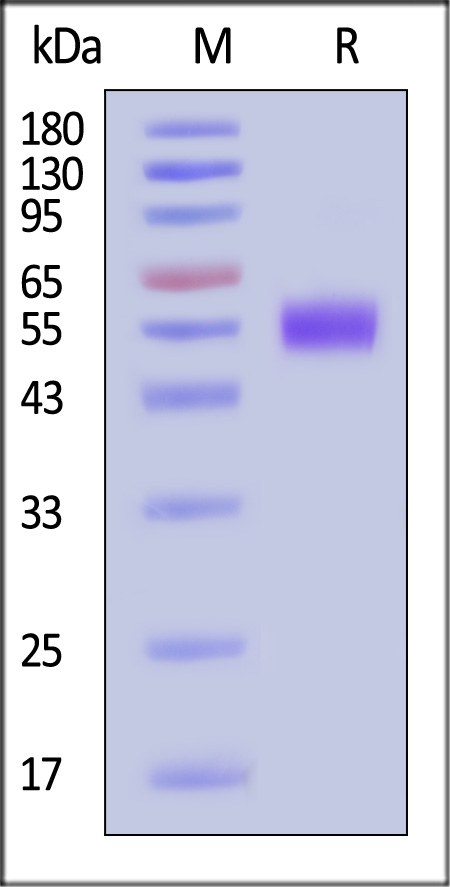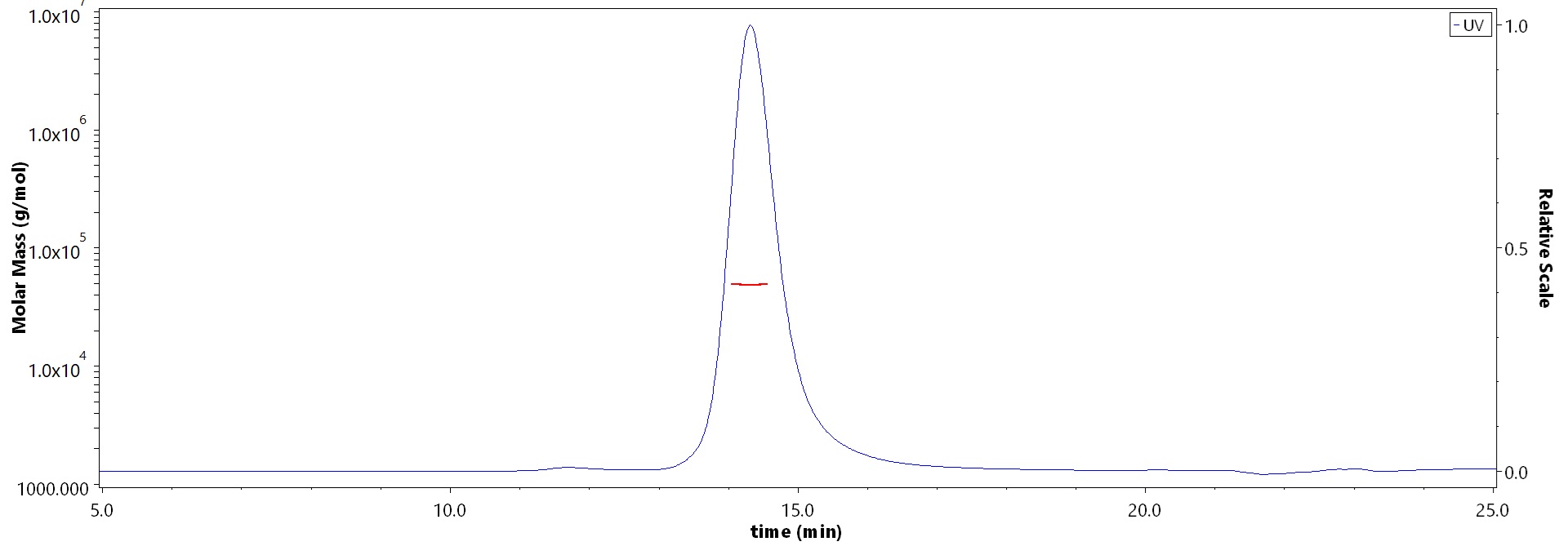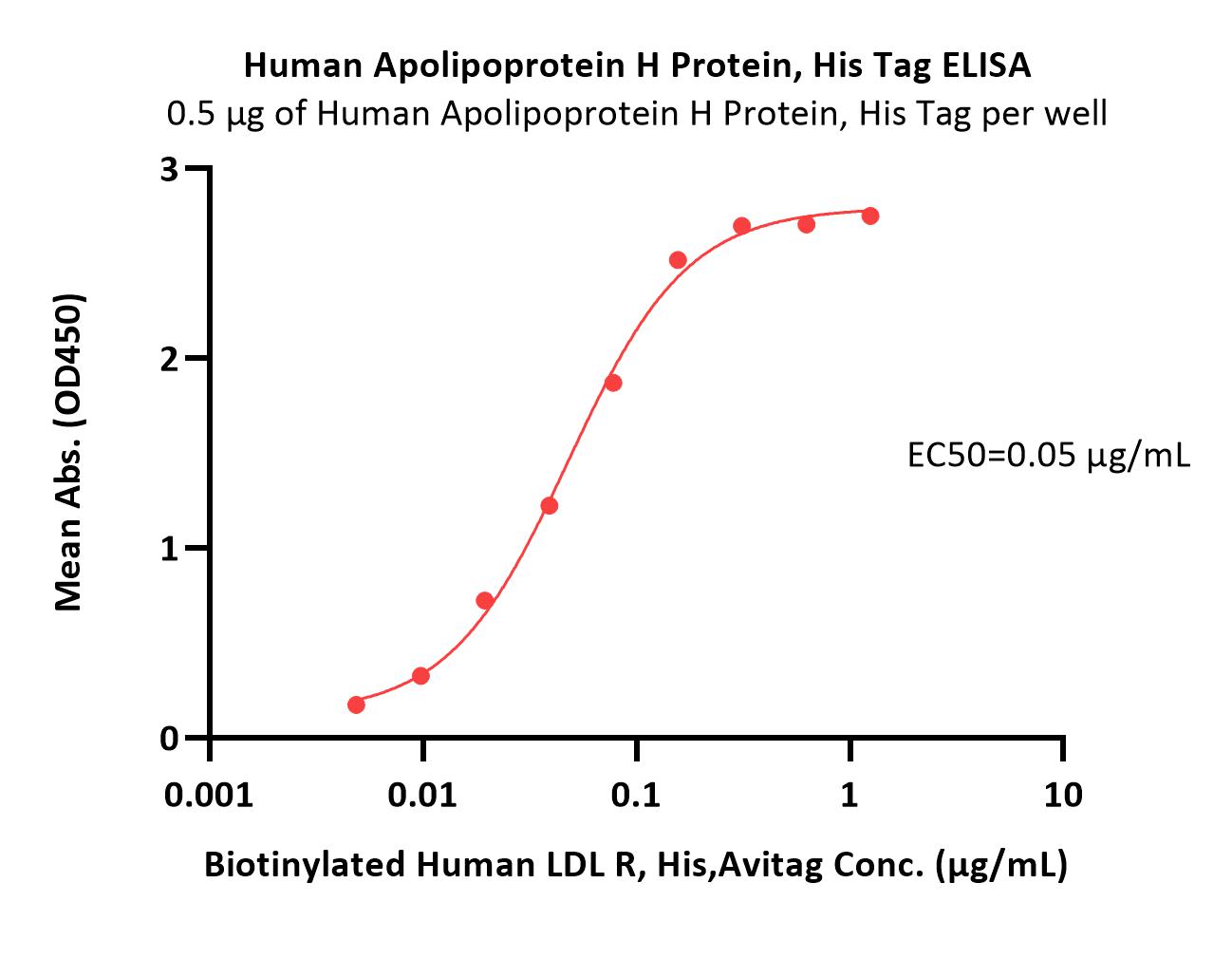分子别名(Synonym)
APOH,Apo-H,B2GPI,Beta(2)GPI,B2G1
表达区间及表达系统(Source)
Human Apolipoprotein H Protein, His Tag (APH-H52H3) is expressed from human 293 cells (HEK293). It contains AA Gly 20 - Cys 345 (Accession # P02749).
Predicted N-terminus: Gly 20
Request for sequence
蛋白结构(Molecular Characterization)

This protein carries a polyhistidine tag at the C-terminus.
The protein has a calculated MW of 38.1 kDa. The protein migrates as 55-65 kDa when calibrated against Star Ribbon Pre-stained Protein Marker under reducing (R) condition (SDS-PAGE) due to glycosylation.
内毒素(Endotoxin)
Less than 1.0 EU per μg by the LAL method.
纯度(Purity)
>95% as determined by SDS-PAGE.
>95% as determined by SEC-MALS.
制剂(Formulation)
Lyophilized from 0.22 μm filtered solution in PBS, pH7.4 with trehalose as protectant.
Contact us for customized product form or formulation.
重构方法(Reconstitution)
Please see Certificate of Analysis for specific instructions.
For best performance, we strongly recommend you to follow the reconstitution protocol provided in the CoA.
存储(Storage)
For long term storage, the product should be stored at lyophilized state at -20°C or lower.
Please avoid repeated freeze-thaw cycles.
This product is stable after storage at:
- -20°C to -70°C for 12 months in lyophilized state;
- -70°C for 3 months under sterile conditions after reconstitution.
电泳(SDS-PAGE)

Human Apolipoprotein H Protein, His Tag on SDS-PAGE under reducing (R) condition. The gel was stained with Coomassie Blue. The purity of the protein is greater than 95% (With Star Ribbon Pre-stained Protein Marker).
SEC-MALS

The purity of Human Apolipoprotein H Protein, His Tag (Cat. No. APH-H52H3) is more than 95% and the molecular weight of this protein is around 40-55 kDa verified by SEC-MALS.
Report
活性(Bioactivity)-ELISA

Immobilized Human Apolipoprotein H Protein, His Tag (Cat. No. APH-H52H3) at 5 μg/mL (100 μL/well) can bind Biotinylated Human LDL R, His,Avitag (Cat. No. LDR-H82E7) with a linear range of 0.005-0.156 μg/mL (QC tested).
Protocol
背景(Background)
Autoantibodies directed to negatively charged phospholipids, in particular cardiolipin, have been detected in the serum of patients with systemic lupus erythematosus (SLE) and antiphospholipid syndrome (APS). APS is characterised by venous and arterial thrombosis, recurrent spontaneous abortions and thrombocytopenia. It is now known that a serum cofactor, β2-glycoprotein 1, is required for the binding of cardiolipin by autoantibodies in the sera of patients with APS. By contrast, anticardiolipin antibodies from patients with infectious diseases (in particular, syphilis) do not require this cofactor.
β2-Glycoprotein 1, also known as apolipoprotein H, is a relatively abundant serum protein (present at a concentration of about 0.2 mg/ml) that may play a role in coagulation. It has been shown to bind to platelets, mitochondria and negatively charged substances such as heparin, DNA, dextran sulphate and negatively charged phospholipids.























































 膜杰作
膜杰作 Star Staining
Star Staining











